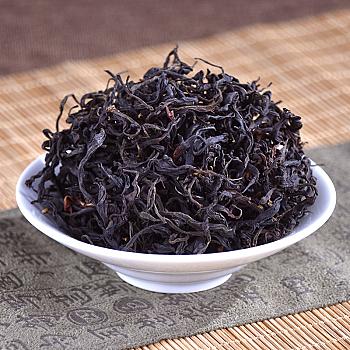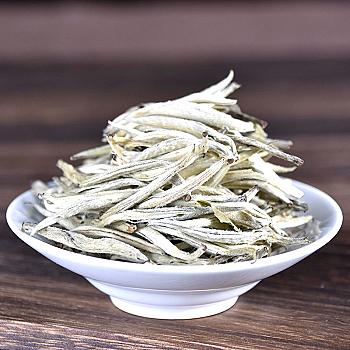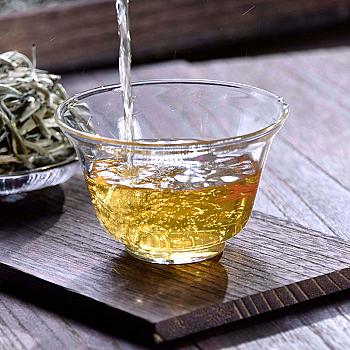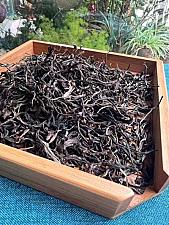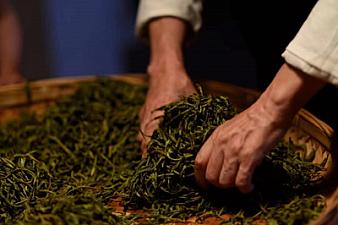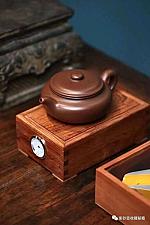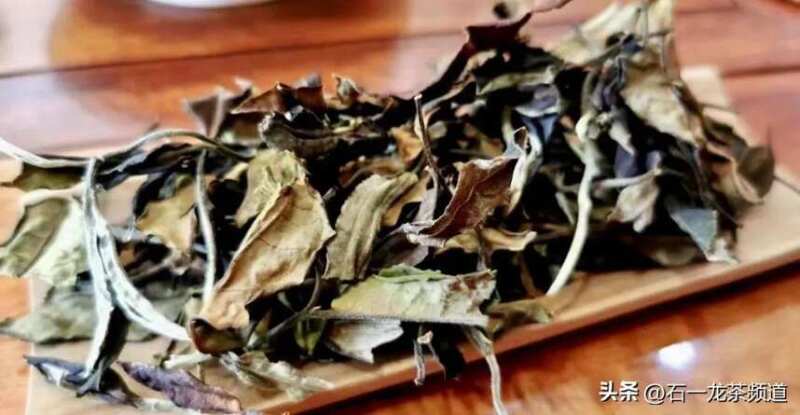
"Yunnan white tea" is a copy and imitation
August 16, 2025
"Yunnan white tea" as a supplement to the Yunnan tea industry is not an issue, but Yunnan white tea lacks scientific research support, and it's when Yunnan's relevant colleges and research institutions can formulate national standards for Yunnan white tea that there will be a way out. Today's Yunnan white tea can be said to be imitative tea, the core of Yunnan tea is making good Pu'er tea. Pu'er tea is a geographical indication product of Yunnan.

"Yunnan White Tea" as a supplement to Yunnan tea industry is not an issue, but the lack of scientific research support for Yunnan white tea, and when can relevant schools and research institutions in Yunnan formulate national standards for Yunnan white tea are the way out.
Today's Yunnan white tea can be said to be an imitation tea, and the core of Yunnan tea is to make good Pu'er tea.
Pu'er tea is a geographical indication product from Yunnan Province, white tea is a geographical indication product from Fujian Province, and the national standard of both is an important evidence for the tea industry in these two provinces.
Its origin is different, its characteristics are different, its category is different, and the taste experience is also different. It can be said that: white tea is from Fujian as white tea, produced in Yunnan no longer counted as a genuine white tea.
The sentence "oranges grown in Huai-nan are oranges, but those grown in the northern part of the river are locust trees" makes it clear.
White tea is referred to as "a year's tea, three years' medicine, seven years' treasure". At the beginning of this century, with white tea learning from compressed Pu-erh (compressed tea) on the basis of traditional loose leaf tea, and having the shared characteristic of long-term storage aging, more and more people began linking white tea to Pu-erh tea.
Especially after the commercial concept of "the more aged, the more aromatic" Puer tea has been widely accepted by the market, Puer tea has played a tremendous role in boosting the sales of oolong teas that also undergo post-harvest fermentation, thus sparking off an Oolong craze across China's entire tea market.
It is widely known that the core value of each tea type is formed by its original place of origin, variety of tea plant and its processing. Different tea-producing areas have their own advantages in terms of tea resources. These resource advantages are unique to these places, therefore there are also differences between them in terms of tea varieties and products.
Fuding white tea, commonly known as Fuding white tea, is the origin of white tea. The raw materials are mainly made up of large leaf white tea or large hair tea from Fuding and its surrounding areas, and the products include Baihao Silver Needle, Bai Mudan, Gong Mei and Shouxin etc. series of characteristic products.

The output of white tea is just as much a product of its origin environment, tea variety, production techniques and low polyphenol content.
The National Standard of China GB/T 22291-2017, based on the core "Fuding White Tea", although did not specify a limited geographic range and only restricted the species of tea trees, but the growth of tea tree varieties has a huge regional distinction, born in Fuding as high-quality white tea, born in other regions of Fujian as inferior white tea, to say nothing of born in Yunnan which is far away from it and has a distinct environment?
Fuding White Tea is also produced in the surrounding areas, and its quality is the best; nearby Pinghe White Tea is also good, but far inferior to Fuding White Tea.
Yunnan Jinggu big white tea or other places in Yunnan big leaf, medium and small leaf fresh leaves, can also be made into white tea according to GB/T 22291-2017 national standards, but except that the external characteristics of the product are basically similar, its flavor experience is far apart, this white tea is not that white tea.
"Yunnan Bai Cha", also known as "Moonlight White", is a type of lightly fermented tea made by processing the fresh leaves, not killing them, not rubbing or kneading, and then drying them after wilting.
Pu-erh tea and Fujian white tea both have a unique character and inimitability. If Fujian farmers produce tea from the Wuyi Mountains with the processing techniques of Pu-erh, it would be fake Pu-erh.
For example, Yunnan or other tea-producing areas, are called "white tea" with regional characteristics, and can be directly said to be fake white tea.
Looking at today's Yunnan tea industry which tries to imitate white tea by using big leaf tea trees is actually a new story of "Dong Shi Effacing"
For example, Yunnan Jinggu big white tea and "YunNan Bai Cha classic" called "yue guang bai", are a variety of tea tree species in Yunnan province, that is not the most suitable for good quality white tea, the white tea body experience made also quite general.
In the tea trade, white teas from Yunnan are commonly referred to as "Yunnan Big White Tea" or "Yunnan Silver Needle", and have silvery hairs.
This positioning looks like it has no problem, but after careful consideration, it is apparent that producers themselves have doubts and are anxious about Yunnan white tea products. "The truly thick 'Yunnan big white tea'" sentence, completely exposed the essence of Yunnan white tea.
If we say that white hair needles, moonlight white and other teas made from tea leaves of Diqing big white tea can be said to have a basis for saying so, then the ancient tree, large tree white tea made from ancient trees, old trees in Xishuangbanna, Baoshan, Lingcang etc. as raw material, using traditional tea-making techniques of white tea, is actually an imitation or plagiarism of Fujian white tea rather than a true Chinese traditional white tea.
Of course, I also support and recognize the self-confidence of local history and culture, recognizing the creation of history and tracing its origins.

Yunnan big white tea, like Jinggu big white tea, also has a historical record, and it is quite profound, however, the production technology of Jinggu white tea at that time was different from the one recognized by today's tea industry, so whether the historical records of Jinggu big white tea are of the same kind as Fuding white tea, needs to be discussed.
In other words, is Jingshang Bai Cha and Fuding White Tea the same class of white tea or a giant puzzle.
"Yunnan white tea" not only ferments slowly, the requirements for opening soup are relatively low, and the sensory experience of the final product is far different from that of Fuding white tea. We cannot ignore such a difference, even interpreting it as "characteristics".
Currently, although many tea merchants advertise that they produce "Yunnan White Tea" with small-leaf varieties, the special geographic growth factors determine that there are natural differences between Yunnan White Tea and Fujian White Tea in terms of growing environment and production processes.
Furthermore, the white tea itself has a simple processing technology, Yunnan teas are thick and heavy, cold air even more, and the white tea made from Yunnan big leaf variety is not beneficial to health at all.
Currently, some tea farmers in Puer production areas can not sell fresh leaves, which are made into white tea by rough and simple methods.
These tea leaves are bought by Fuzhou merchants for between 50 and 100 yuan per kilogram, and it's said there are tens of thousands of tons of it each year. They often turn it into fake white tea from Fujian province to sell, and sometimes even put the label of ancient tree white tea on it.
For instance, the standard of Yunnan White Tea is also deficient in technology support, lacks systematic scientific basis, has no Yunnan characteristics, imperfect and not strict technical standards. With this to produce "Yunnan white tea", it can't help but waste Puer tea quality resources, causing people to ridicule.
Some professors with titles at Yunnan Tea Academy don't have a good academic level, but they can boast of being top-notch in "standing out" and making faces.
However, creating a new national standard for Yunnan white tea is not a job that can be done overnight; it requires extensive scientific research and a large amount of experimental data to argue its foundation.
Therefore, at present, even if we can consider Jinggu Da Bai Mao as the treasure of "Yunnan White Tea" field, as a small supplement to Yunnan tea, it still cannot escape the embarrassment of no obvious regional characteristics and higher value for drinking.
All tea processing techniques need to be supported by a large amount of technological data for exploration and development, but the process of developing this technological data is long and arduous.
If Yunnan white tea can genuinely establish a set of scientific, complete, high-standard technical specifications, combined with Yunnan's unique variety resources for tea trees, it may be possible to produce a typical, quality superior variety of local Yunnan large-leaf type white tea.
But this time the Yunnan white tea is likely not that white tea at all, and can only be called an innovative product of Yunnan tea industry - Yunnan large-leaf white tea, because it has been two sets of completely different evaluation systems.
Whether it is because the majority of white tea producers' understanding of white tea is too superficial, resulting in the quality loss of "Yunnan White Tea"; or due to a lack of scientific and comprehensive understanding of the production technology and techniques of white tea, which failed to form the unique technical process for "Yunnan White Tea".
Regardless of the reason, "Yunnan White Tea" will inevitably be unable to become Yunnan tea's hope and future, because the core of Yunnan tea can only be Puer tea, Dian Hong tea. To polish Puer tea's golden signboard well and revitalize Dian Hong's grandeur.
The core of Yunnan tea industry is to further clarify the characteristics of tea tree resources in each tea area, and determine the specialty teas in each tea area. It's also to scientifically adjust and optimize the product layout of traditional Pu'er tea, aged Pu'er, Dianhong and Dianyue.
Adhering to the priority development of traditional Pu'er tea, vigorously developing Pu'er ripe tea and Yunnan Red, adopting local conditions to develop high-quality green teas and white teas in production models, constantly optimizing industry structures, promoting the inherent competitiveness and domestic and international market share of Yunnan tea.
"Pu'er tea is the ultimate finisher for all kinds of tea flavors," this inner belief has been supporting my faith in Pu'er tea!
The soul of Yunnan big leaf tea is Pu'er tea. Let's cherish the historical status of hard-to-get Pu'er tea, which is a symbol of Yunnan. Don't imitate and plagiarize, invent what is called Yunnan white tea, with shortsightedness, digging one's own grave!
